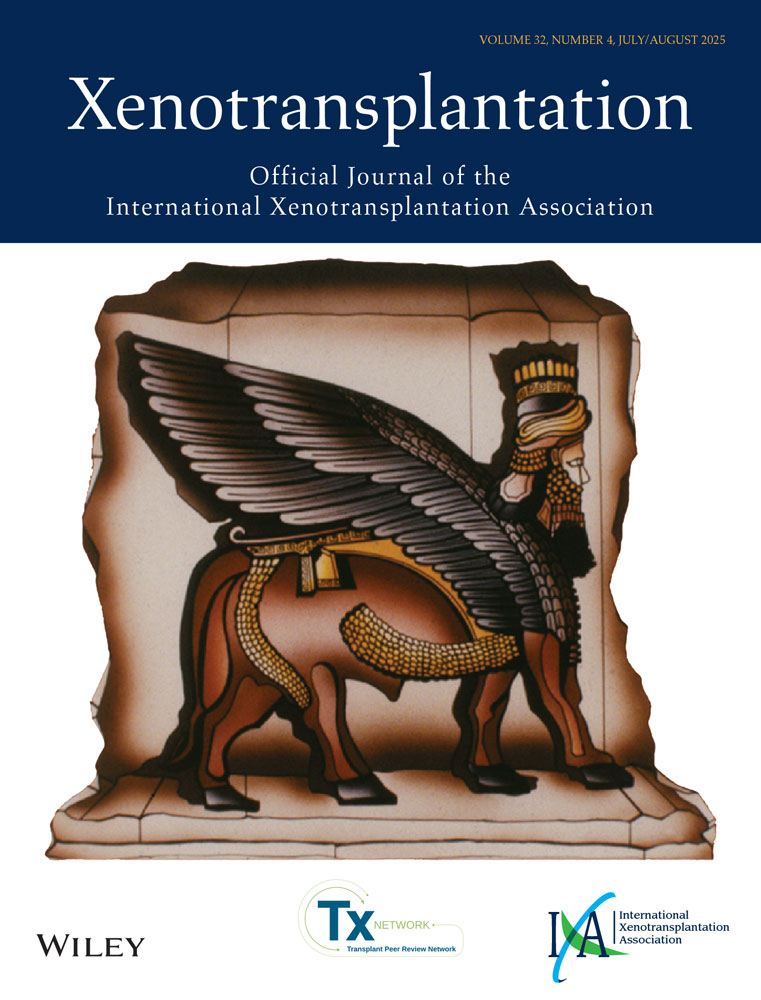The production of transgenic pigs for potential use in clinical xenotransplantation: microbiological evaluation
Abstract
Debate over the infection hazards of pig-to-human xenotransplantation has focused mainly on the porcine endogenous retroviruses (PERV). However, hazards of exogenous infectious agents possibly associated with the xenograft have also been evaluated (Xenotransplantation 2000; 7: 143). We report the results of a health monitoring program demonstrating the exclusion of more than 80 potential pathogens from nine cohorts of pigs reared in a high welfare bioexclusion facility as potential xenograft source animals. A dynamic bacterial flora of pigs reared under barrier conditions was characterized, emphasizing the significance of monitoring for multiresistant antimicrobial sensitivity patterns. Evidence was found for exclusion of two commonly residual exogenous viruses, porcine cytomegalovirus and porcine lymphotropic herpesviruses, among a proportion of the cohorts tested. Finally, there was histopathological evidence for low grade pneumonitis among sentinel pigs, likely to have been associated with the use of quaternary ammonium disinfectants during the production process, indicating a need for review of toxicology data for disinfectant agents used in such bioexclusion systems. Intensive health monitoring programs, based upon regularly updated recommendations from the microbiological research community, will enable significant reductions in the potential hazards associated with pig-to-human xenotransplantation.




